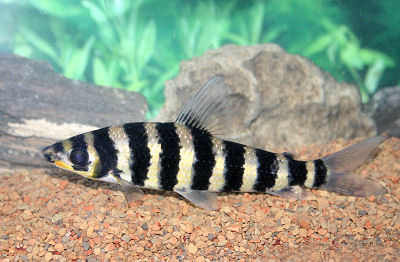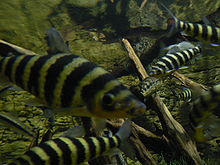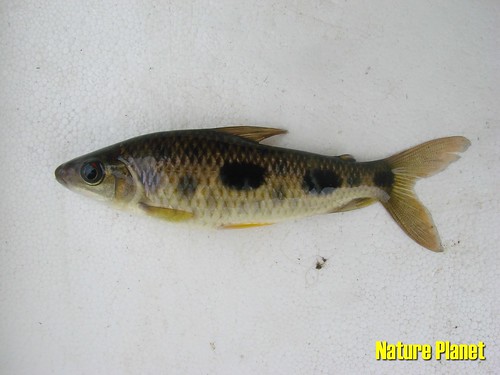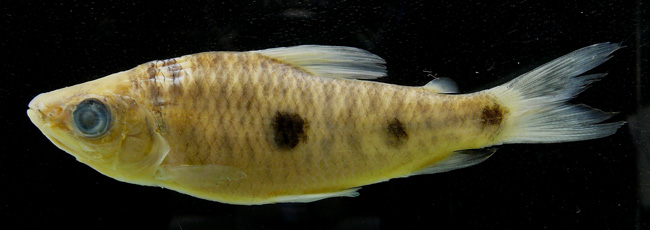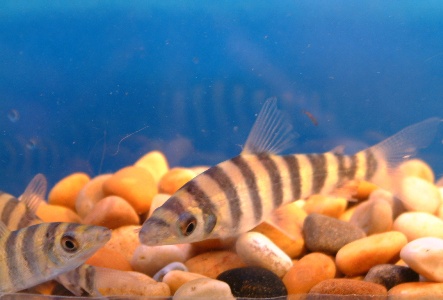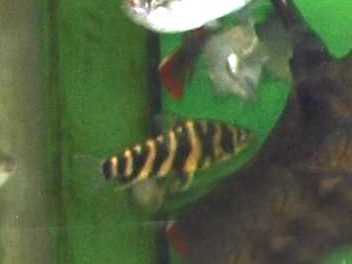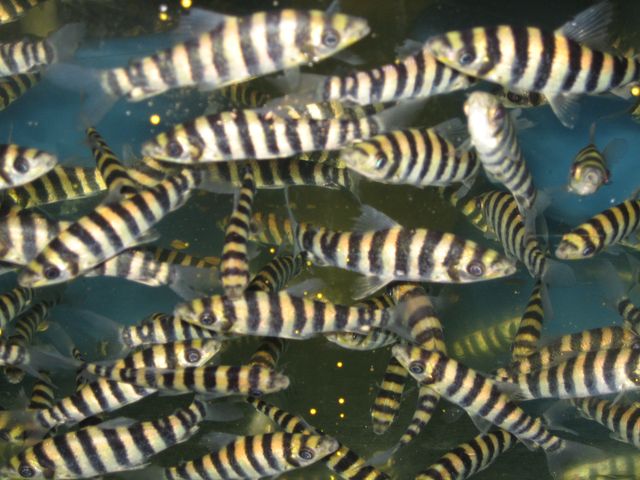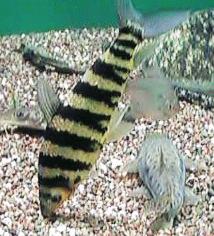Leporinus Octofasciatum
Occurs in ponds . Very active during the rainy season, it gains the flooded zones where it is captured with nets. In dry season, it is confined to the deepest parts of the river where it is captured with fishing rods. Feeds primarily on fruits, seeds and termites. The food is crushed by four strong teeth on each half-jaw.. Males are sexually mature at 1 yr, while females are mature at 2 years. Reproduction takes place from November to June, with a peak from December to March but mature individuals can be found year round. Females spawn around 100,000 to 200,000 eggs . The females grow slightly faster than the males; however this difference is clearly perceptible only after 4 years of age. Its excellent flesh makes it ideal for consumption in spite of its numerous bones

